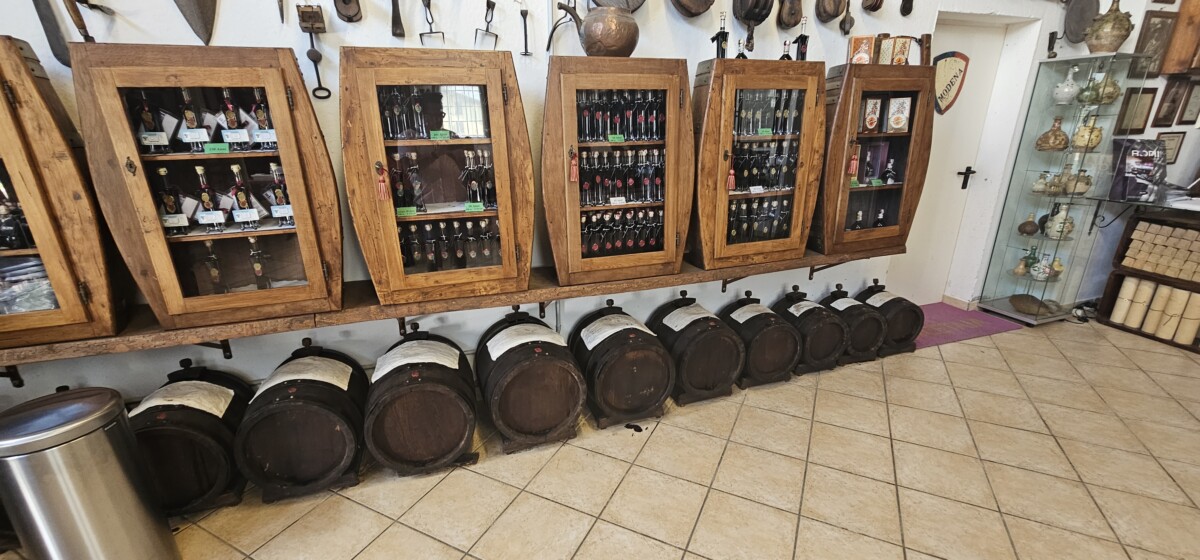Balsamic vinegar, with its rich and complex flavors, has become a beloved ingredient in kitchens worldwide. This dark elixir is more than just a dressing or a condiment; it is a product of centuries of tradition and craftsmanship. In this article, we will delve into the fascinating history of balsamic vinegar, explore the intricate process of making it, and discover some of the key locations where it is produced. To top it off, we’ll share two delightful recipes that showcase the versatility of this beloved condiment.
The History of Balsamic Vinegar
Balsamic vinegar’s origins can be traced back to ancient Rome. The word “balsamic” is derived from the Latin word “balsamum,” which means “balm” or “healing.” Initially, it was used not only as a condiment but also for its supposed medicinal properties. The first known references to balsamic vinegar can be found in manuscripts from the Middle Ages, specifically in Italy’s Emilia-Romagna region.
The modern history of balsamic vinegar began to take shape during the Renaissance in the Italian city of Modena. Local producers began refining the aging process, resulting in the creation of the sweet, complex, and syrupy vinegar we know today. In the 18th century, balsamic vinegar production took a leap forward when the House of Este, a noble family in Modena, started producing and trading this prized elixir.
Making Balsamic Vinegar: A Labor of Love
The production of authentic balsamic vinegar is a meticulous and time-consuming process. It all starts with grapes, typically the sweet and juicy Trebbiano variety. The grapes are crushed to obtain their juice or “must,” which is then simmered for hours to concentrate its flavors. This reduction is referred to as “grape must.”
The grape must is then transferred to wooden barrels, usually made of oak, cherry, chestnut, mulberry, or juniper. These barrels are arranged in a series known as a “battery.” The vinegar ages for a minimum of 12 years, and often much longer, as it gradually transforms in flavor and texture. The aging process allows the vinegar to absorb characteristics from the wood and develop its unique sweetness and complexity.
Locations of Production
Balsamic vinegar production is primarily concentrated in the Emilia-Romagna region of Italy, with Modena and Reggio Emilia being the most famous and prestigious areas. These regions have ideal climate conditions and a rich tradition of craftsmanship that contribute to the exceptional quality of their balsamic vinegar.
Other regions in Italy, such as Modena’s neighboring provinces and parts of Reggio Emilia, also produce balsamic vinegar of high quality. However, true traditional balsamic vinegar, labeled as “Aceto Balsamico Tradizionale,” is made exclusively in these two regions under strict regulations.
Balsamic vinegar production has also expanded to other parts of the world, including the United States and Spain. While these products may not have the same centuries-old history as their Italian counterparts, they have gained popularity for their unique flavors and uses.
Balsamic vinegar is not just a condiment; it’s a culinary treasure with a rich history, painstaking craftsmanship, and a range of uses in the kitchen. From its ancient medicinal roots to the modern kitchens worldwide, this vinegar has evolved into a beloved ingredient that adds depth and complexity to a wide array of dishes. Whether drizzled over salads, used as a glaze for meats, or enjoyed in countless other ways, balsamic vinegar continues to captivate our taste buds and remind us of the enduring traditions that have shaped its exceptional character.
Balsamic Vinegar in the Kitchen: Recipes
Now that we’ve explored the history and craftsmanship behind balsamic vinegar, let’s indulge in its culinary possibilities with two delicious recipes.
- Balsamic Glazed Chicken
Ingredients:
- 4 boneless, skinless chicken breasts
- 1/2 cup balsamic vinegar
- 1/4 cup honey
- 2 cloves garlic, minced
- 2 tablespoons olive oil
- Salt and pepper to taste
- Fresh rosemary for garnish
Instructions:
- In a small saucepan, combine the balsamic vinegar, honey, and minced garlic. Simmer over low heat for 10-15 minutes until it thickens into a glaze. Set aside.
- Season the chicken breasts with salt and pepper.
- Heat olive oil in a large skillet over medium-high heat. Add the chicken breasts and cook for 6-7 minutes on each side or until cooked through.
- Pour the balsamic glaze over the cooked chicken breasts and let it simmer for 2-3 minutes, coating the chicken evenly.
- Serve the balsamic glazed chicken with a drizzle of extra glaze and garnish with fresh rosemary.
- Caprese Salad with Balsamic Reduction
Ingredients:
- 4 large ripe tomatoes
- 8 ounces fresh mozzarella cheese, sliced
- Fresh basil leaves
- 1/4 cup extra-virgin olive oil
- 1/4 cup balsamic vinegar
- Salt and pepper to taste
Instructions:
- Slice the tomatoes and mozzarella cheese into 1/4-inch thick rounds.
- Arrange the tomato and mozzarella slices on a serving platter, alternating them and tucking fresh basil leaves in between.
- In a small saucepan, heat the balsamic vinegar over low heat. Simmer for 10-15 minutes until it reduces by half and becomes thick and syrupy.
- Drizzle the extra-virgin olive oil and balsamic reduction over the tomato and mozzarella slices.
- Season with salt and pepper to taste and serve immediately as a refreshing appetizer or side dish.





